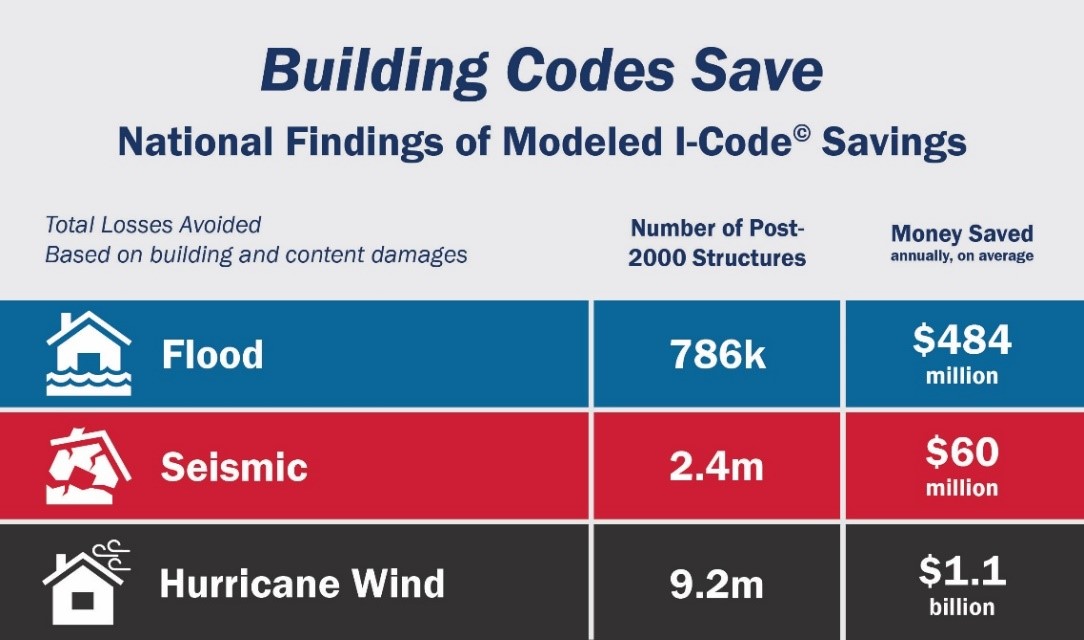Using big data, FEMA’s modeling of the 18.1 million buildings constructed in the United States since 2000 has found the nation has saved $1.6 billion every year. These savings represent the cumulative losses avoided when structures follow International Codes or similar building codes that mitigate flood, hurricane and earthquake damage. FEMA projects that by 2040, the nation will save around $3.2 billion per year. This adds up to almost $133 billion in total losses avoided from 2000 to 2040.
Those dollar values represent considerable financial reasons for why communities should be proactive in adopting and enforcing hazard-resistant building codes. Hazard-resistant building codes also support FEMA’s mission to help people prepare for, mitigate, respond to and recover from natural hazards.
FEMA is developing outreach materials to help programs across the agency convey the study’s results to our state, local, tribal and territorial partners. Additional information and materials are available in the Building Codes Saves Study on FEMA’s website.
If you are interested in learning more about Building Codes Save and how you can integrate the study’s findings into your program, please email the Building Science Helpline.


